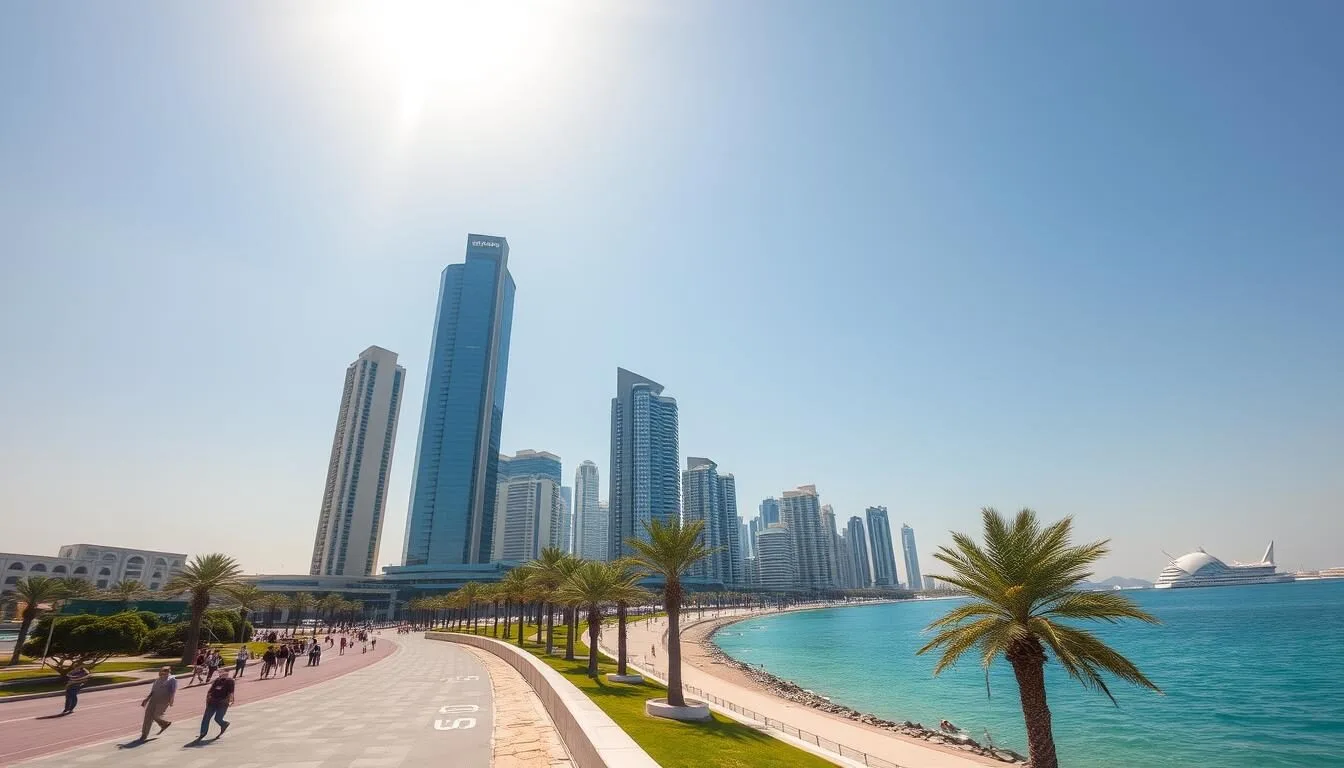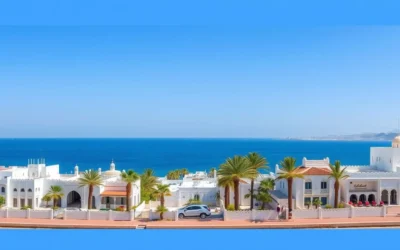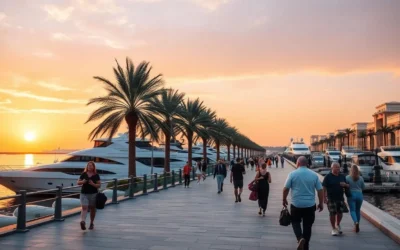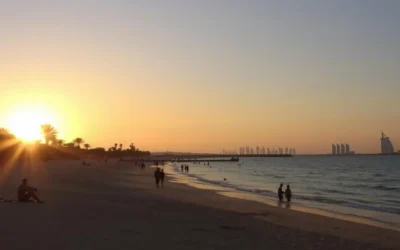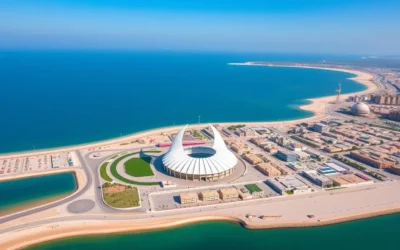✓ Accommodations✓ Flights✓ Rental Cars✓ Tours & Activities
Qatar attracts millions of tourists every year, drawn by its rich history, cultural landmarks, and warm desert climate. However, the country’s weather varies dramatically throughout the year, making time a crucial factor in planning your travel.
With extremely hot summers and mild winters, understanding Qatar’s unique climate patterns is essential to maximize your experience in this fascinating Middle Eastern destination. When is the best time to visit Qatar?
Planning a trip to Doha requires considering the weather to ensure a comfortable journey. This guide will help you identify the ideal time to visit based on your preferences and budget.
Understanding Qatar’s Desert Climate
Qatar’s desert climate is known for its extreme temperatures and low humidity levels throughout the year.
The Two Distinct Seasons
Qatar experiences two distinct seasons. The winter season is mild and pleasant, with temperatures ranging from 57°F to 86°F (13°C to 30°C), making it an ideal time to visit. In contrast, the summer season is extremely hot, with temperatures often reaching as high as 107°F (42°C).
Impact of Humidity
The humidity in Qatar can significantly impact the perceived temperature. Coastal areas tend to have higher humidity levels than inland regions, making the heat feel more oppressive.
Winter in Qatar: The Prime Time to Visit
If you’re planning a trip to Qatar, timing is everything, and winter is the perfect season to experience all that this beautiful country has to offer. The winter period, which runs from November to February, is a wonderful time to explore Qatar’s rich culture, breathtaking landscapes, and exciting outdoor activities.
November to March: Perfect Weather Window
The winter season in Qatar offers a perfect weather window, with mild temperatures and plenty of sunshine. You can expect 7-10 hours of sunshine daily with minimal rainfall, creating optimal conditions for exploring both urban and desert environments. This period is ideal for outdoor adventures, such as camping under the stars or a golfing holiday.
Temperature Ranges and What to Expect
During the winter months, average temperatures range from 57°F to 77°F, making it comfortable to explore Doha’s outdoor markets, architectural landmarks, and cultural sites during daylight hours without concern for heat exhaustion. Sea temperatures also range from 66°F to 80°F, making beach activities and water sports pleasant options.
Winter Activities and Experiences
Winter in Qatar enables you to enjoy a wide range of activities, including desert camping, dune bashing, outdoor dining, cultural explorations, and waterfront activities. You can relax at a sidewalk café under clear blue skies or explore the beautiful parks and sights like Souq Waqif. 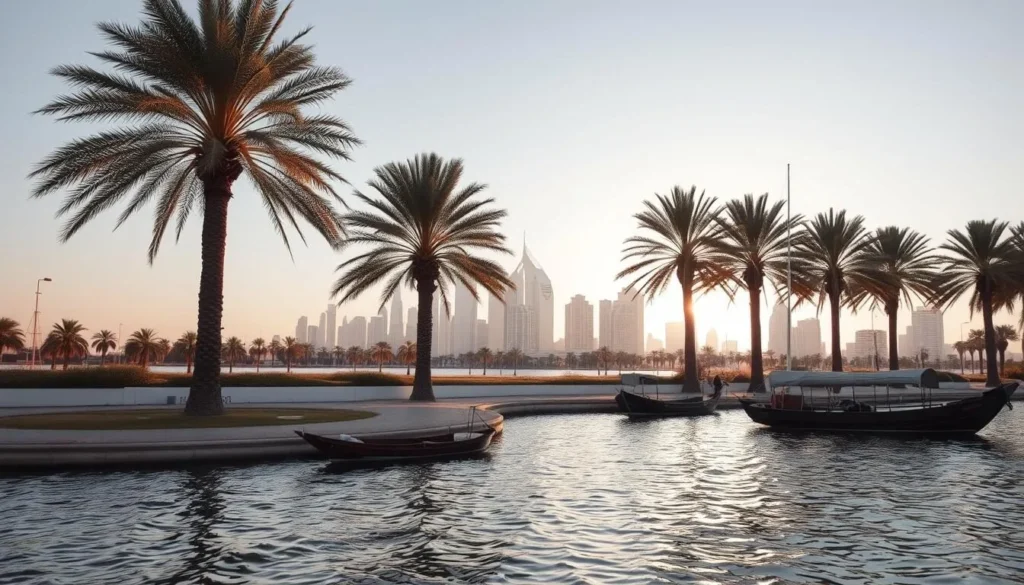
- Enjoy desert camping and dune bashing under the stars.
- Explore Doha’s outdoor markets and cultural sites.
- Relax at a sidewalk café or enjoy waterfront activities.
Doha, Qatar: Best Months for a Weather-Savvy Trip
Visiting Doha at the right time can significantly enhance your travel experience. The best months to visit are typically between November and February.
November to February: The Golden Period
This period is ideal due to its mild climate, with temperatures between 69°F and 73°F, making it perfect for sightseeing and outdoor activities.
March: The Transition Month
March is a transitional month with rising temperatures, ranging from 62°F to 80°F, still suitable for visiting but with increasing heat.
October: Early Season Benefits
October is another good time to visit, with temperatures cooling down from the summer highs, making it an excellent period to enjoy the city before the peak winter season.
Shoulder Seasons: The Budget-Friendly Alternative
The shoulder season in Qatar is an attractive option for those looking to avoid peak season prices. During this time, you can enjoy a more relaxed travel experience while saving on costs.
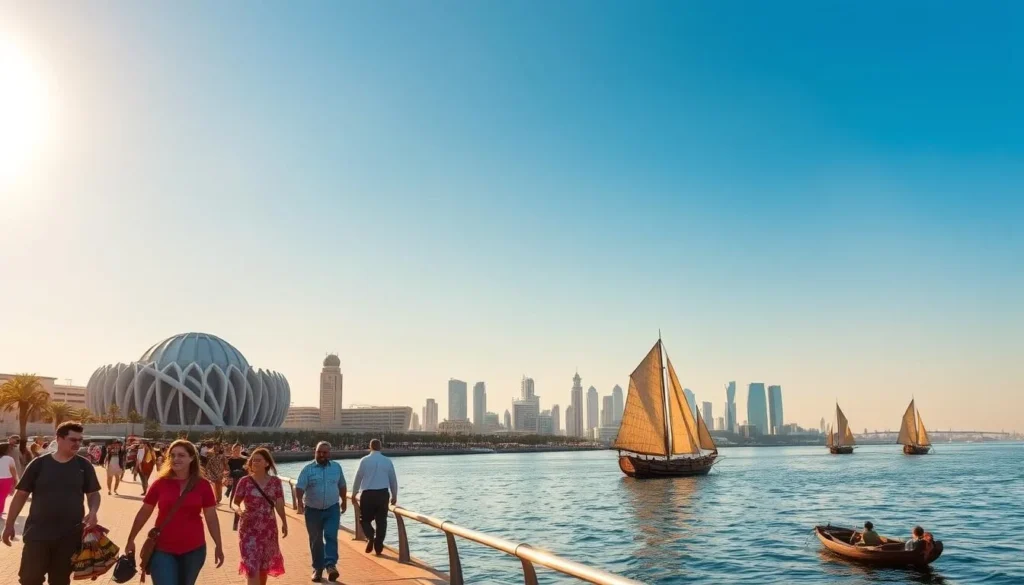
April to May: Spring Shoulder Season
The spring shoulder season, which spans from April to May, offers gradually warming temperatures, ranging from 71°F to 102°F. While April remains tolerable, May starts to get quite hot. You can still enjoy outdoor activities during the mornings and evenings, but it’s advisable to take breaks or relax by the pool at your hotel during the midday heat.
September to October: Fall Shoulder Season
The fall shoulder season, from September to October, provides a more peaceful time to experience the country. Although September is still quite hot, with temperatures between 84°F and 102°F, October brings more comfortable conditions, with temperatures ranging from 77°F to 95°F and lower humidity levels. Visiting during this time allows you to explore Qatar’s major attractions with fewer crowds and shorter lines.
Both shoulder seasons offer a great compromise between weather conditions and travel costs, making them ideal for budget-conscious travelers looking to visit Qatar without the peak season prices.
Summer in Qatar: What to Know Before You Go
If you’re considering visiting Qatar during the summer, here’s what you need to know to make the most of your trip. Summer is the hottest season in Qatar, with temperatures soaring to extreme heights.
June to August: Navigating the Extreme Heat
The summer months, particularly June to August, are characterized by temperatures often above 100°F, sometimes reaching as high as 107°F, coupled with humidity levels between 40-60%. To navigate this extreme heat, it’s advisable to limit outdoor activities to early mornings or late evenings, and spend the hottest part of the day in air-conditioned spaces.

Indoor Activities During Summer Months
Qatar offers numerous indoor attractions that are perfect for summer visits, including world-class museums like the Museum of Islamic Art, luxury shopping malls such as the Mall of Qatar, and indoor theme parks. These provide a cool and comfortable environment to enjoy during the hot summer days.
Summer Travel Tips and Precautions
To stay safe, it’s crucial to stay hydrated, wear loose, breathable clothing, and use high-SPF sunscreen. Regular breaks in air-conditioned spaces can also help mitigate the effects of the heat, ensuring a more enjoyable trip.
Weather Phenomena and Special Considerations
Beyond the typical desert climate, Qatar experiences some unusual weather conditions that travelers should know about. Understanding these phenomena can help you plan your trip to Qatar more effectively.
Al Sarayat: Spring Thunderstorms
During the spring, from March to May, Qatar is affected by Al Sarayat, a weather condition characterized by sudden and intense thunderstorms with strong winds and heavy rainfall. These storms can disrupt outdoor activities and travel plans for several days.
Shamal Winds: Summer Sandstorms
In the summer months, June to August, Qatar is impacted by Shamal Winds, which bring sandstorms that can last for several days, reducing visibility and air quality. This can affect your travel plans and even cause flight delays or cancellations.
Al Wasmi: Fall Rain Period
From October to mid-December, the Al Wasmi period brings intermittent rain showers and occasional storms, providing relief from the dry desert conditions. However, this can also cause temporary flooding in urban areas, so it’s crucial to be prepared for the time of year you plan to visit.

Being aware of these weather phenomena can help you make the most of your trip to Qatar and plan accordingly for the season you travel in.
Conclusion: Planning Your Weather-Perfect Trip to Doha
Planning a trip to Doha, Qatar, requires careful consideration of the weather to make the most of your visit. The best time to visit Qatar is between November and April, when temperatures are comfortable and ideal for exploring Doha’s monuments and desert landscapes. If you’re on a budget, consider the shoulder months of April, October, and early November for a balance between weather and cost. Book your hotel and activities in advance to secure the best rates during peak season.
—
The above is subject to change.
Check back often to TRAVEL.COM for the latest travel tips and deals.
